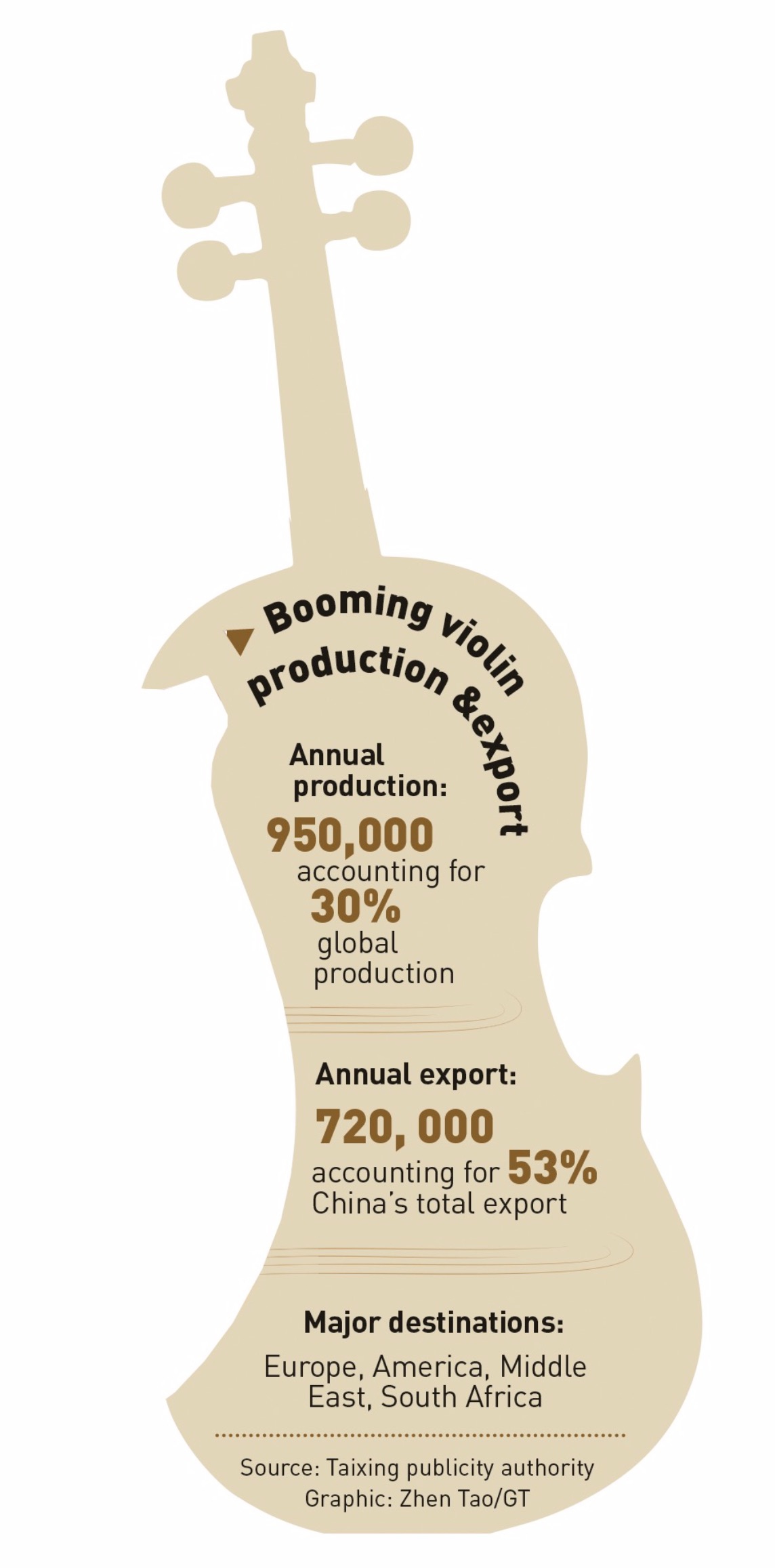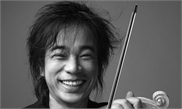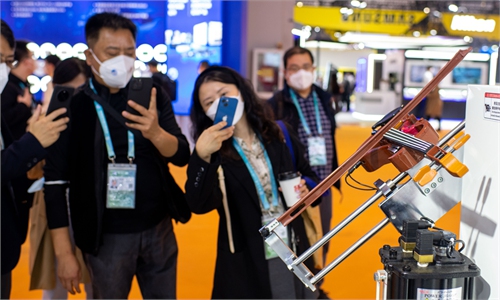Huangqiao, the world's largest violin production base, becomes a ‘musical instrument capital’
Nation’s opening-up policy buoys up a ‘musical instrument capital’
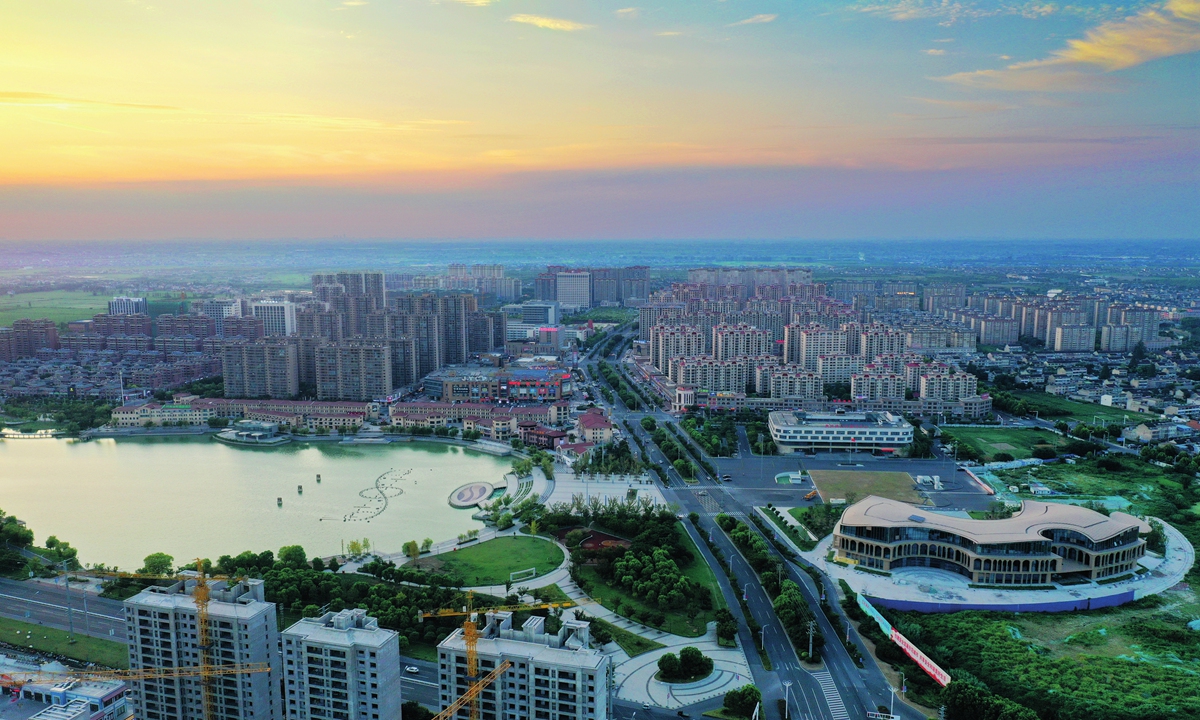
A view of Huangqiao town Photo: Courtesy of Huangqiao publicity authority
Five hundred years ago, in Cremona, a small town next to Milan, Italy, luthiers made the world's first modern violin. Since then, it has become a mecca for violin makers around the world, as hundreds of very famous violins were passed down to this day.
Now, Huangqiao town in Taixing, East China's Jiangsu Province, which benefited from the country's opening-up policy and rapid development of the manufacturing industry, has become the world's largest violin production base and is called "Cremona of the East."
At present, the town of violins, produces more than 950,000 violins every year, accounting for 70 percent of national production and 30 percent of global supply, local officials told the Global Times.
The town's annual export sales of violins has reached 720,000, accounting for 53 percent of China's violin exports, mainly to Europe, the US, the Middle East, South Africa and other regions, with annual output value hitting 1 billion yuan ($145.6 million).
Gaining recognition from the industry, Huangqiao has become a major host for the International Instruments Playing Day of China for six consecutive years. During the event in 2022, Taixing invited more than 50 bands from home and abroad to perform, joined by 4,000 performers and 60,000 spectators, said Shen Kai, an official from Taixing city.
In 1962, two Huangqiao-born businessmen living in Shanghai returned to the town. Later, a local musical instrument factory was established. In 1971, Li Shu, an apprentice there, crafted the town's first violin.
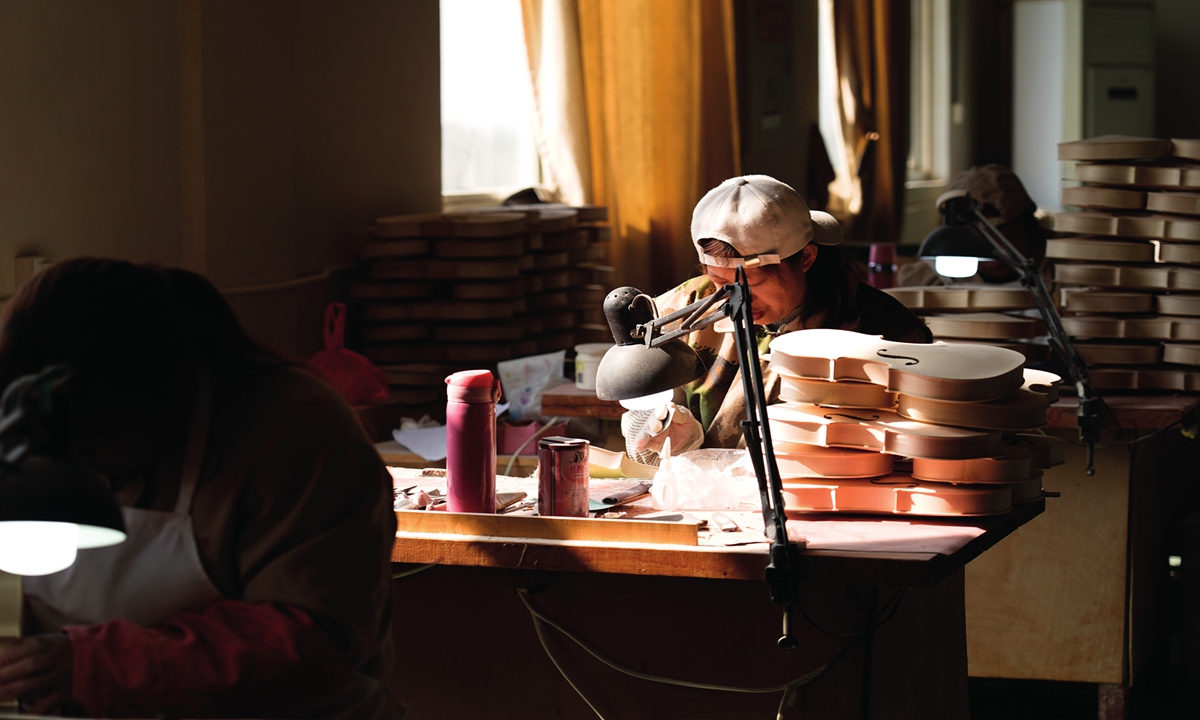
A local worker manufactures violins. Photo: Courtesy of Huangqiao publicity authority
Manufacturing base
Now Li is chairman of Fengling Musical Instruments Co., the largest violin manufacturer in Huangqiao. Li told the Global Times that the company's annual output of various models and grades of violin products reach 280,000 sets, more than 90 percent of which are sold to 86 countries including the US, Italy, Germany and Japan.
Looking back on the past years of struggle, Li, now over 70 years old, said with his eyes gleaming that the diligence and hard-working spirit of local residents led to the company's success. "We can produce large quantities of violins in a short period of time with a price lower than the international market."
Speaking on international cooperation, Li noted that without China's opening-up policy, the company would not be what it is today. "The policy has opened the door to the world for Chinese companies, providing a platform to learn from overseas advanced technology as well as promoting cultural exchange," Li said.
In addition, over more than 40 years since the policy was implemented, the country has given great support including exempting export taxes to encourage violin production.
He Qin, chairman from Qinhai, another local leading violin manufacturer, expressed her gratitude to the government's support for small and medium-sized enterprises. "Thanks to the tax reduction policy, we survived the pandemic. Now orders are flowing in from Brazil, Russia and many other countries," He said.
At present, Huangqiao is home to more than 230 violin manufacturing companies, as well as supporting enterprises of violin accessories, manufacturing paint and machine molds.
"Among the 200,000 residents in the town, more than 30,000 people are engaged in violin-making, which not only created jobs for local residents, but enriched their lives," Cheng Jianhua, another city official told the Global Times.
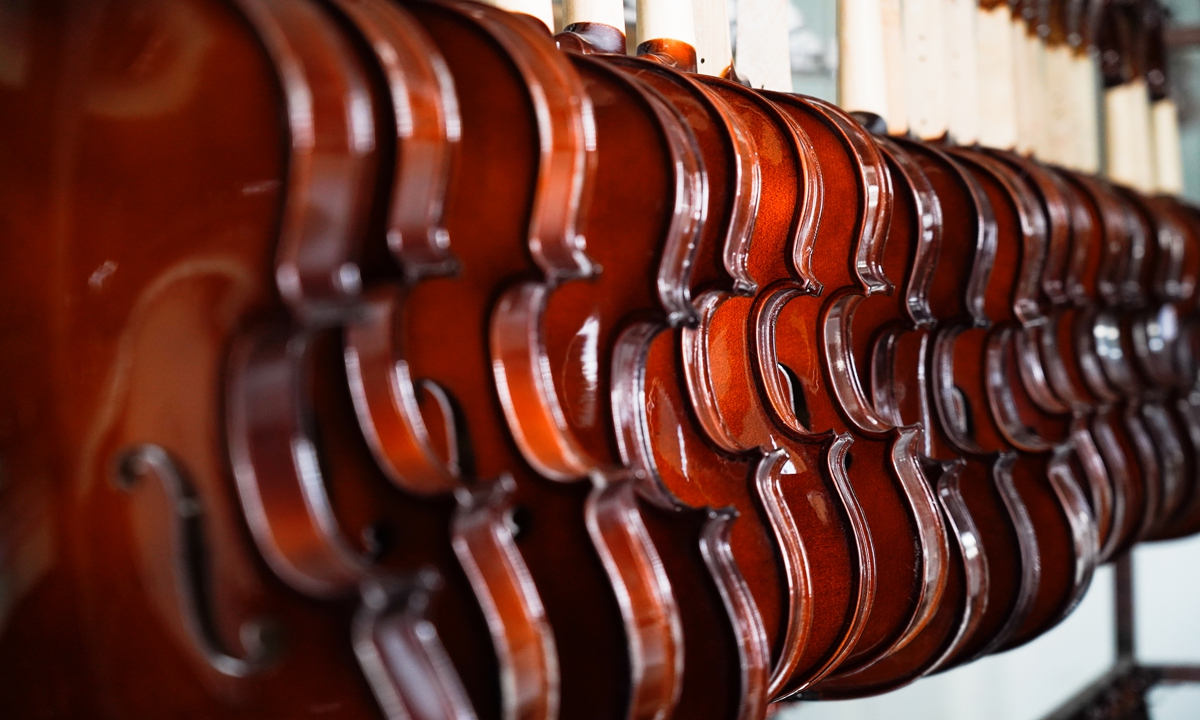
Violins made by Fengling Musical Instruments Co Photo: Courtesy of Huangqiao publicity authority
Variation and symphony
Relying on price advantages to expand sales on the international market is the truth that Huangqiao has become the world's largest violin production base, but that's not all. While steadily occupying a share of the world market, local luthiers have realized that they should build up their brand value and gradually move to the middle and high end of the industry.
Xu Xiaofeng is a representative of local artisans as well as a well-known violin maker in the twon. His violins are widely acclaimed for their exquisite manufacturing details and excellent timbre.
"When mentioning Huangqiao, the bulk of people think it is a place that produces low-end violins. Now we are saying goodbye to the old 'label'," Xu told the Global Times. Therefore, after more than three-year learning abroad, he decided to return home and lend a helping hand to local fellow residents.
Xu said that it is necessary to make violins for performance-use into works of art, which would be quite expensive and produced in relatively small quantities. At present, he only makes a dozen high-end violins each year, earning a good prestige in the industry.
Xu established a workshop in Huangqiao, teaching the skills he has learned over the years to the younger generation of violin makers.
Lü Guanbao, another artisan in the town, has made violins all his life. Lü lives in a deep courtyard in the town. As he opens the door of his house, a number of fine violins can be seen hanging overhead.
In Lü's eyes, every violin has its own story. Picking up the violin made by Lü, its curve is delicate with the body painted like translucent amber. He carved different characters on each instrument, including Beethoven, Mozart and Venus.
"China's violin-making skills now even surpass that of Europe. The industrial upgrading should rely on cultural inspiration, which requires better raw materials," Lü told the Global Times.
Lü plans to hold a competition in September this year, providing a communication platform for local artisans to exchange opinions and craft skills.
At present, more craftsmen like Xu and Lü are playing the variation and symphony of the melodious town. With the strenuous efforts of several generations, this town will eventually become a musical wonderland, local officials say.
Wu Zhenguo contributed to the story.
